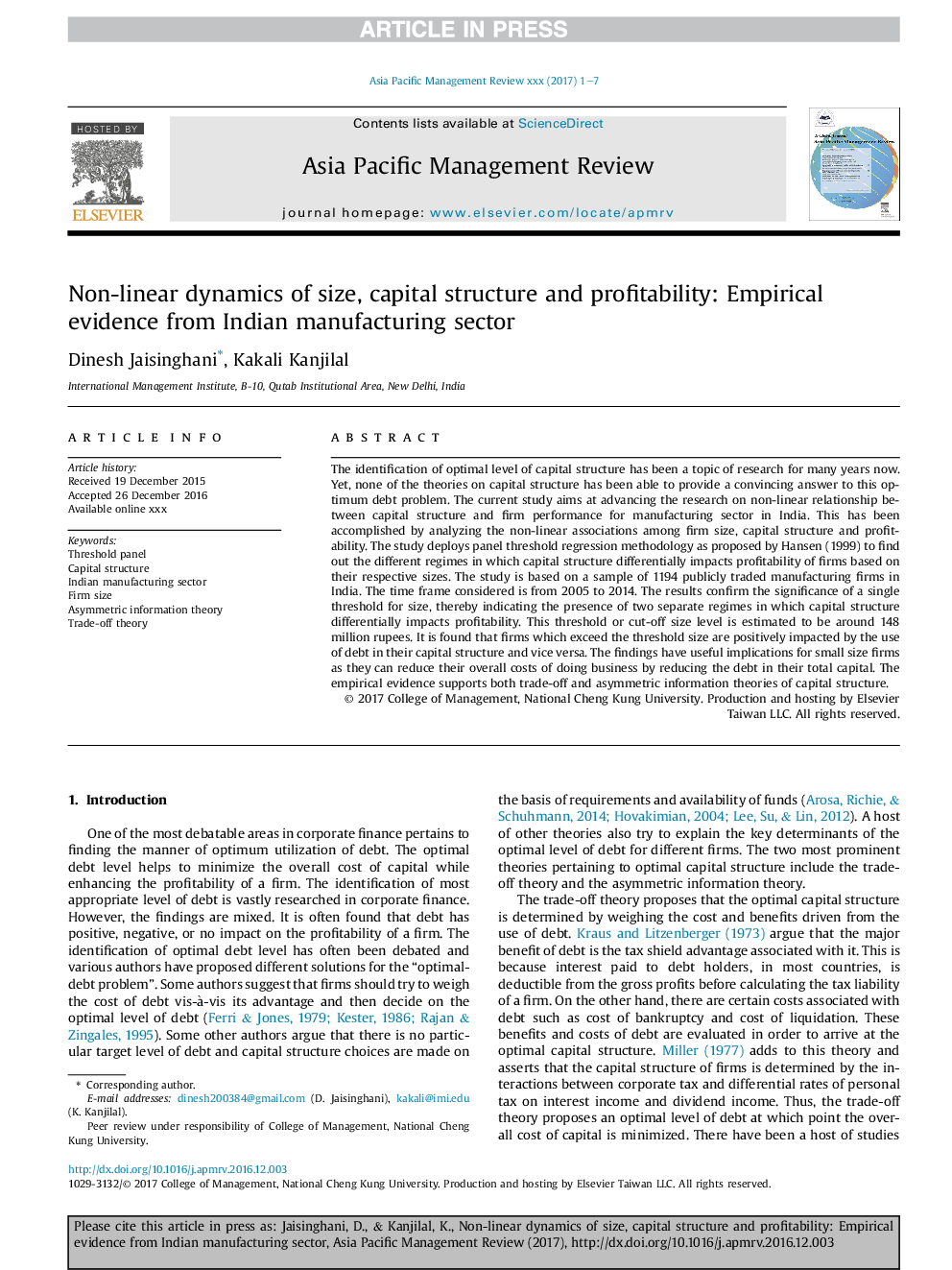| Article ID | Journal | Published Year | Pages | File Type |
|---|---|---|---|---|
| 5110575 | Asia Pacific Management Review | 2017 | 7 Pages |
Abstract
The identification of optimal level of capital structure has been a topic of research for many years now. Yet, none of the theories on capital structure has been able to provide a convincing answer to this optimum debt problem. The current study aims at advancing the research on non-linear relationship between capital structure and firm performance for manufacturing sector in India. This has been accomplished by analyzing the non-linear associations among firm size, capital structure and profitability. The study deploys panel threshold regression methodology as proposed by Hansen (1999) to find out the different regimes in which capital structure differentially impacts profitability of firms based on their respective sizes. The study is based on a sample of 1194 publicly traded manufacturing firms in India. The time frame considered is from 2005 to 2014. The results confirm the significance of a single threshold for size, thereby indicating the presence of two separate regimes in which capital structure differentially impacts profitability. This threshold or cut-off size level is estimated to be around 148 million rupees. It is found that firms which exceed the threshold size are positively impacted by the use of debt in their capital structure and vice versa. The findings have useful implications for small size firms as they can reduce their overall costs of doing business by reducing the debt in their total capital. The empirical evidence supports both trade-off and asymmetric information theories of capital structure.
Related Topics
Social Sciences and Humanities
Business, Management and Accounting
Business, Management and Accounting (General)
Authors
Dinesh Jaisinghani, Kakali Kanjilal,
